Objects
Displaying 176 - 200 of 1096
| ObjectID | Object Description | |
|---|---|---|
| 2018.011.005 Uniform, Sports |
This uniform was worn by George Saling during the 1932 Olympics. Saling, a resident of Corydon, Iowa, won the Gold Medal for the 110 meter high hurdles with a time of 14.6 seconds. Prior to racing in… Read More | 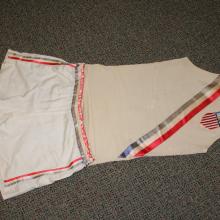
|
| 2018.011.006 Shoe, Track |
These track shoes were worn by George Saling during the 1932 Olympic Games held in Los Angeles, California. Saling, a resident of Corydon, Iowa, won the Gold Medal for the 110 meter high hurdles with… Read More | 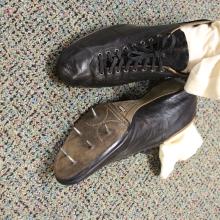
|
| 2018.011.007 Print, Photographic |
This photograph shows the scoreboard at the 1932 Olympic Games held in Los Angeles, California. The scoreboard shows the results of 110 meter high hurdles race. George Saling, a resident of Corydon,… Read More | 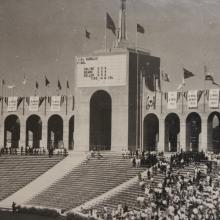
|
| 2018.011.009 Clipping, Newspaper |
This clipping contains George Saling's personal account of his track career. Saling, a resident of Corydon, Iowa, won the Gold Medal for the 110 meter high hurdles during the 1932 Olympic Games held… Read More | 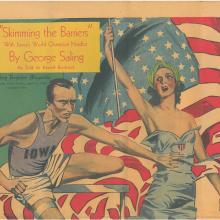
|
| 2018.012.001 Brick |
This brick was taken from the foundation of the Henderson Lewelling house in Salem, Iowa, which was a stop on the Underground Railroad. Content can be used with the following standards: 5th grade SS… Read More | 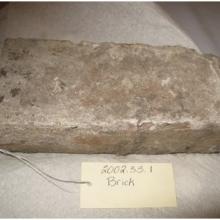
|
| 2018.012.002 Adobe |
This piece of adobe was part of the original foundation of the John Todd House located in Tabor, Iowa. The house was an important stop on the Underground Railroad. Runaway slaves hid in a closet on… Read More | 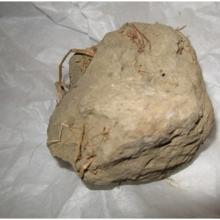
|
| 2018.012.003 Print, Photographic |
This photograph shows a protest march that occurred in Fort Madison, Iowa in 1963. On November 2, 1963, 300 people gathered at Central Park in Fort Madison, Iowa for a protest march. Led by local… Read More | 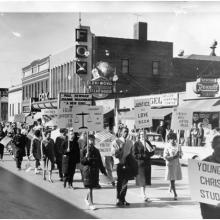
|
| 2018.012.004 Sign |
Members of Davenport's Catholic Interracial Council carried this sign at the March on Washington on August 28, 1963. Dr. Martin Luther King, Jr. delivered his historic "I Have a Dream" speech at the… Read More | 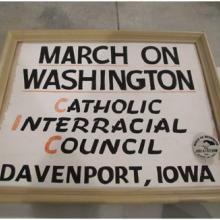
|
| 2018.012.005 Print, Photographic |
This is a photograph of some of the members of the Cedar Rapids Chapter of the NAACP. This chapter became inactive during the Great Depression, but was reactivated in 1942 after African Americans… Read More | 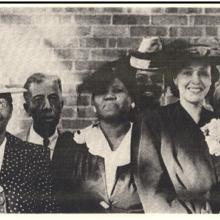
|
| 2018.012.006 Print, Photographic |
From 1968 to 1976, the Fort Madison NAACP fought plans to widen Highway 61 in a route that would remove many homes owned by Mexican and African Americans who could not buy homes elsewhere in Fort… Read More | 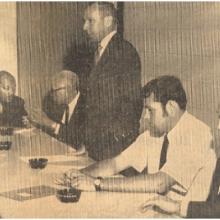
|
| 2018.012.007 Print, Photographic |
This photograph shows Iowa Governor Harold Hughes signing the Fair Housing Bill into law in 1967. Before the Fair Housing Bill was passed, the Iowa Legislature passed a law to establish a Civil… Read More | 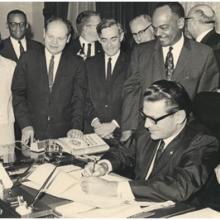
|
| 2018.012.008 Flier, Political |
In 1966, Cecil Reed of Cedar Rapids became the first African American Republican to serve in the Iowa legislature. This flier encouraged Iowans to vote for Reed. Content can be used with the… Read More | 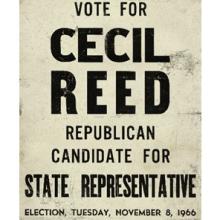
|
| 2018.012.009 Motel |
The Motel Sepia was opened by Cecil Reed, Iowa's first African American Republican Legislator, and his family in 1953. The motel one of only a dozen lodging establishments in Iowa that accepted… Read More | 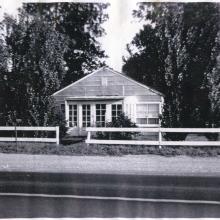
|
| 2018.012.010 Wallet |
This wallet belonged to Samuel Joe Brown, an Iowa attorney who fought for civil rights. Brown began his legal career in Buxton, Iowa, working with noted black attorney George Woodson (co-founder of… Read More | 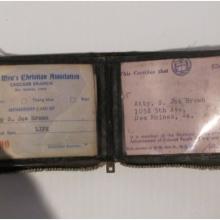
|
| 2018.012.011 Portrait |
This is a portrait of Grace Morris Allen Jones, who was an educator and advocate in the late 19th and early 20th centuries. Jones was born in Keokuk, Iowa, in 1876, and raised in Burlington. In 1891… Read More | 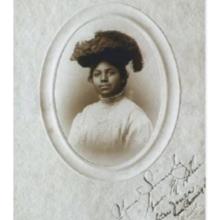
|
| 2018.012.012 Print, Photographic |
This photograph shows Grace Morris Allen Jones with her husband, Laurence Jones, and their two sons. Grace Morris Allen Jones was born in Keokuk, Iowa, in 1876, and raised Burlington. In 1891, she… Read More | 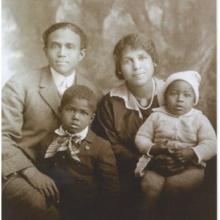
|
| 2018.012.013 Tile, Roof |
These roof tiles were taken from a building in Buxton, Iowa. Buxton was a mining town founded in 1895 by the Consolidation Coal Company (CCC), which supplied the Chicago and Northwestern Railway. The… Read More | 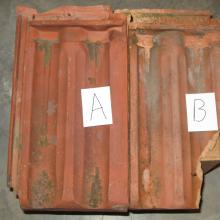
|
| 2018.012.014 Check, Miner's |
Miner's checks, also known as lamp checks, tokens, or tags, were used by mining companies to keep track of how many workers were in a mine in case an accident occurred. This miner's check was used in… Read More | 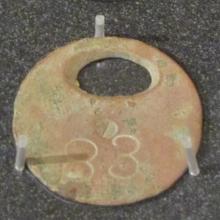
|
| 2018.012.015 Padlock |
This padlock was used in the mining town of Buxton, Iowa. Buxton was a mining town founded in 1895 by the Consolidation Coal Company (CCC), which supplied the Chicago and Northwestern Railway. The… Read More | 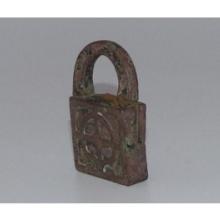
|
| 2018.012.016 Pitcher |
This small pitcher, possible part of a child's tea set, was used by a resident of the mining town of Buxton, Iowa. Buxton was a mining town founded in 1895 by the Consolidation Coal Company (CCC),… Read More | 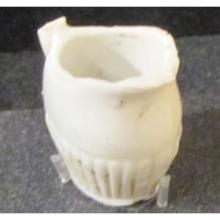
|
| 2018.012.017 Marble |
This marble comes from the mining town of Buxton, Iowa. The marble was possibly used by the child of one of the town's miners. Buxton was a mining town founded in 1895 by the Consolidation Coal… Read More | 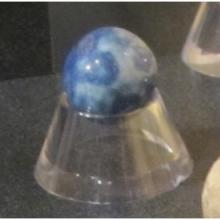
|
| 2018.012.018 Print, Photographic |
This photograph shows one of the mines located near Buxton, Iowa, Mine #13. Buxton was a mining town founded in 1895 by the Consolidation Coal Company (CCC), which supplied the Chicago and… Read More | 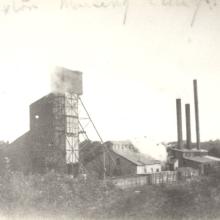
|
| 2018.012.019 Print, Photographic |
This photograph shows a group of Buxton, Iowa, residents standing outside of the town's Mt. Zion Church. Buxton was a mining town founded in 1895 by the Consolidation Coal Company (CCC), which… Read More | 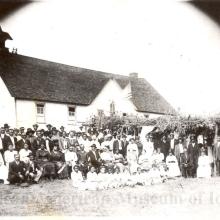
|
| 2018.012.020 Bottle |
This bottle came from the mining town of Buxton, Iowa. Buxton was a mining town founded in 1895 by the Consolidation Coal Company (CCC), which supplied the Chicago and Northwestern Railway. The… Read More | 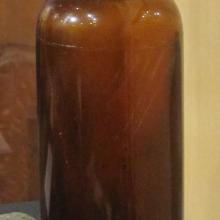
|
| 2018.012.021 Button, Protest |
This button displays the slogan "Black Power." The Black Power movement, which was popular in the 1960s and 1970s, emphasized racial pride and the promotion of the values and interests of African… Read More | 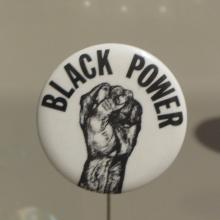
|
